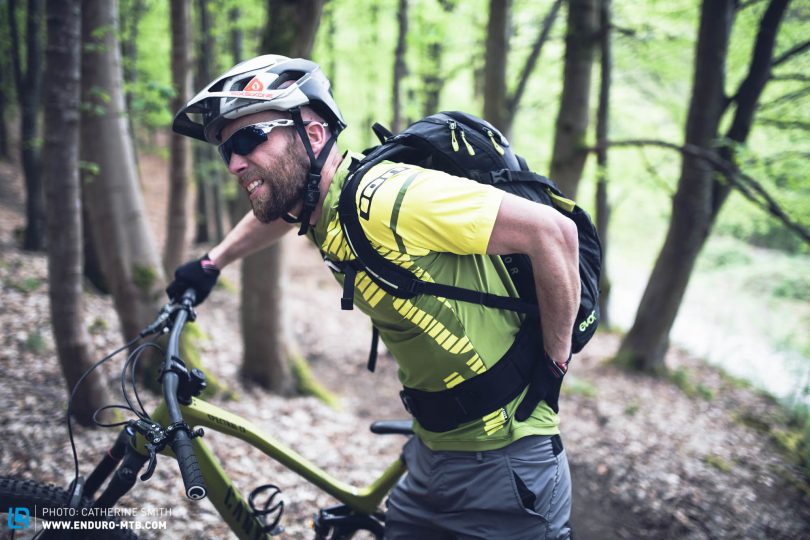Back pain when mountain biking has become the most common “nontraumatic” injury experienced by riders and it quite simply doesn’t need to be that way. A few basic steps can get it sorted and stop you groaning when you have to reach down to tie your laces. Phil Mack at Peebles Physiotherapy in Scotland, is qualified and experienced to the max and has agreed to share some insider knowledge with us.
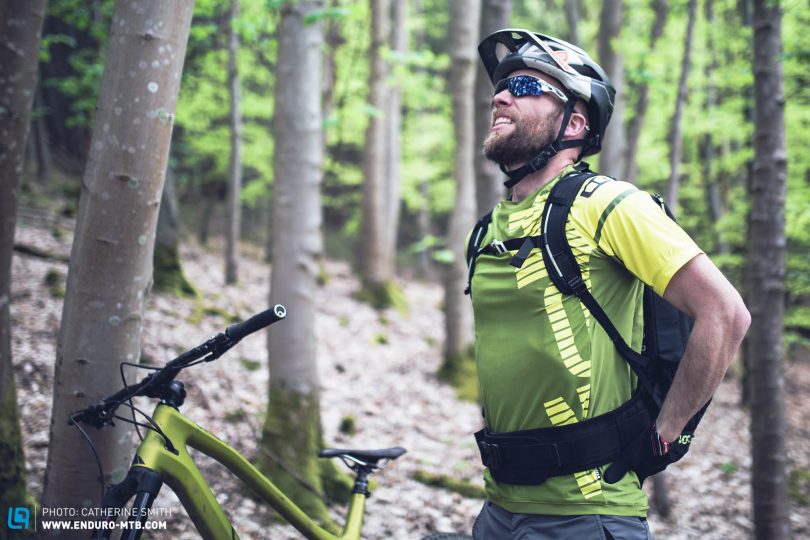
“Being a mountain biker myself, and a Sports Physiotherapist in Peebles, Scotland – arguably the most popular mountain bike destination in the UK , I regularly see riders with a variety of injuries – and our injury statistics clearly supports the view that back pain in mountain biking is on the increase”
What is the main cause of back pain when mountain biking?
There are a number of causes of back pain developing from mountain biking, but the primary cause is the heavy backpacks seen these days – and they seem to be getting even heavier!
When venturing out for a long day in the mountains or local trails, often to very isolated areas, it is essential to carry as much safety gear as possible to cater for bike repairs and weather changes, as well as carry sufficient food, hydration, first aid and even sometimes an emergency shelter. This can all add up to a backpack often weighing in excess of 10 kilos!
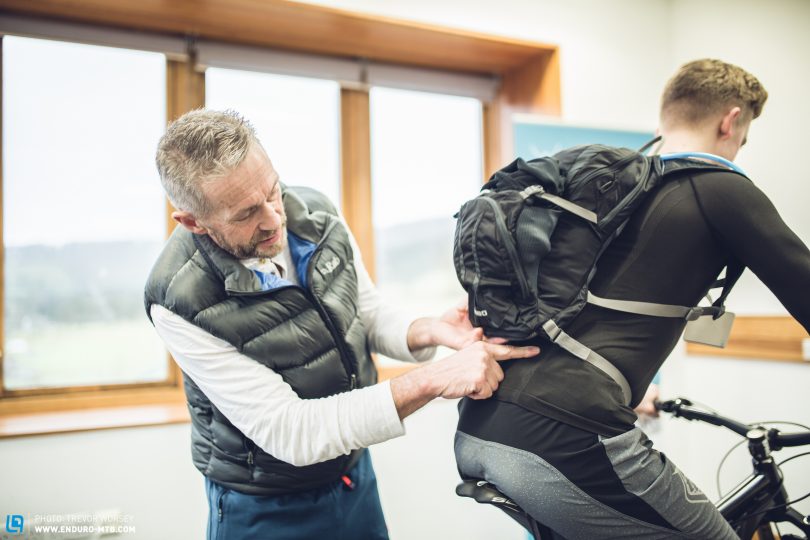
If you also consider the position of a backpack on your back when riding. Most of the backpack load is through the thoracic region (mid-back), with the lower back acting as a suspension between the strong and stable pelvis and hips, and the backpack. Therefore, the lower back has to work incredibly hard to maintain a neutral position, and the surrounding soft tissue structures (muscles, tendons, and ligaments) become very quickly overloaded, causing pain.
It’s very common to experience back pain after a long ride but if you are finding the pain doesn’t go away after a couple of days or you are riding with constant back pain – then it is time to do something about it! Some people advocate for chiropractors, others osteopaths for all kinds of pain and the list continues. These are just some examples of where to start, exactly what you end up doing to treat yourself is not important, what’s important is that you try and find what’s best for you.
Other causes of back pain when mountain biking
Weak core muscles. This is a very common cause of lower back pain. Your back, when riding a bike, is like a suspension bridge with the shoulders and pelvis acting as the columns or piers. The middle back is supported by the rib cage, leaving the lower back as the vulnerable weak point. Now add a heavy bag to the equation, and it is easy to understand why we see so many riders suffering with back pain! Having strong core muscles will help to protect the lower back and make it easier to maintain a strong stable position.
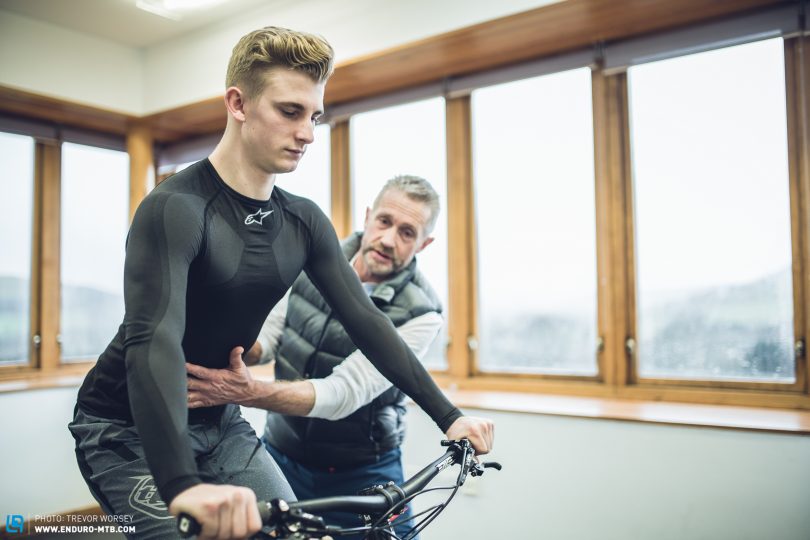
Poor hip mobility. Some riders have tight hip muscles, mainly the hip flexors, gluteal and piriformis muscles. If these muscles are constantly tight it will lead to increased lateral pelvic movement, which will make the lower back work harder to compensate and result in back pain. Poor hip mobility can also cause other injuries like Iliotibial band syndrome and knee pain.
Incorrect bike position. Incorrect bike size (especially a frame too large – causing over-reaching) and saddle height are two common errors that can lead to back pain as well as other injuries like hip pain. Less obvious errors like stem and crank length and saddle horizontal position can also contribute towards the development of back pain.
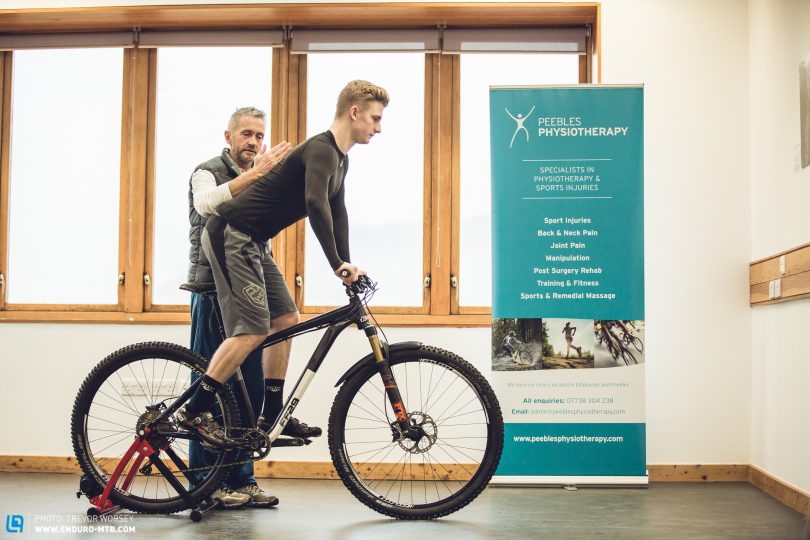
How to prevent back pain when mountain biking
Rethink your backpack strategy.
Find ways to reduce the overall weight of the pack. For example, the weight of water is 1kg per litre. Therefore, if you have bottle cages carry two full 750ml bottles (for example) which can either be used direct or transferred later in the ride to your water bladder, thus reducing your pack weight potentially by 1.5kg.
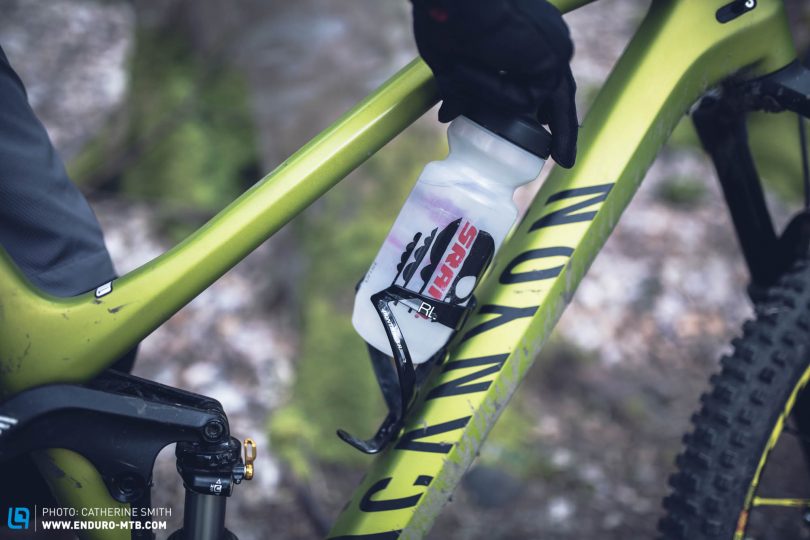
Backpacks with hip/waist pockets can help reduce the load off your back, even a waist pack like the Source Hipster Hydration Belt or the EVOC Hip Pack Race keep the weight centered lower and will help you out. Consider a small saddle bag for your bike tools and spares which will help reduce the weight on your back.
Bike manufacturers like Specialized are starting to come up with ingenious ways to store more items on the bike rather than on the back which can only be a good thing.
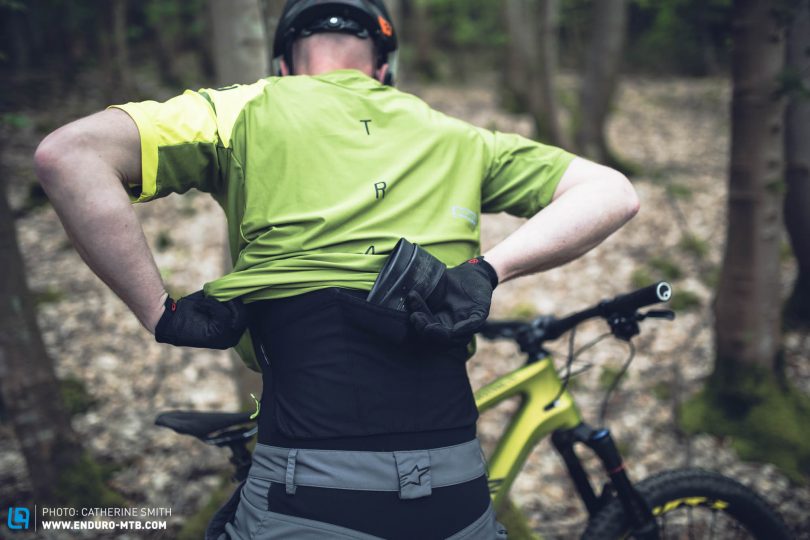
Road style tops with back pockets may not look cool on a mountain bike, but with the pockets being lower than a backpack, using these can help spread the load. There are now also specific storage vests like the RaceFace Tank that allow you to carry the essentials without a pack.
Adjust your climbing technique.
Many of us were taught to stay seated in the saddle when climbing on a mountain bike. If you are carrying a heavy bag as well, this put increased strain on the lower back. Regular standing will help reduce the stress on the lower back as the spine will be in a more neutral position. Also, keeping in a slightly easier gear and therefore higher cadence will also help reduce the strain on your lower back.
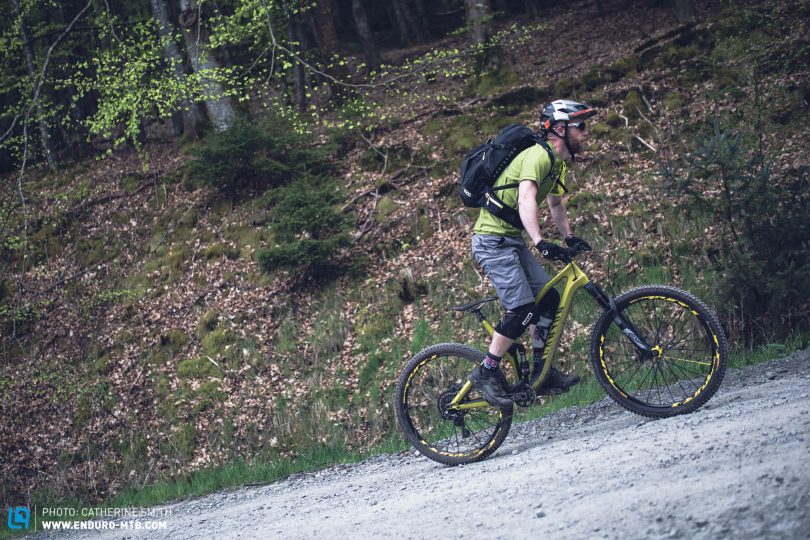
Improve your core strength.
Having strong core muscles will help you to protect your back when you are riding by keeping it in a neutral (or natural) position. It will also help to strengthen the “bridge” between the thoracic spine and pelvis where the majority of back pain usually develops. 3 exercises which help strengthen your core are the Plank, Shoulder Bridge, and Side Bridge Star. However, performing the correct technique is essential to gaining good core strength so it’s well worth getting an experienced Sports Physio, PT or Pilates teacher to show you how to perform the exercises correctly:
Improve hip mobility.
Improving your hip mobility can increase your performance as well as reduce the risk of injuries. The following exercises are great for hip mobility: Deep supported squats, Lunges, Glute stretching, Hip flexor stretch and Piriformis stretch.
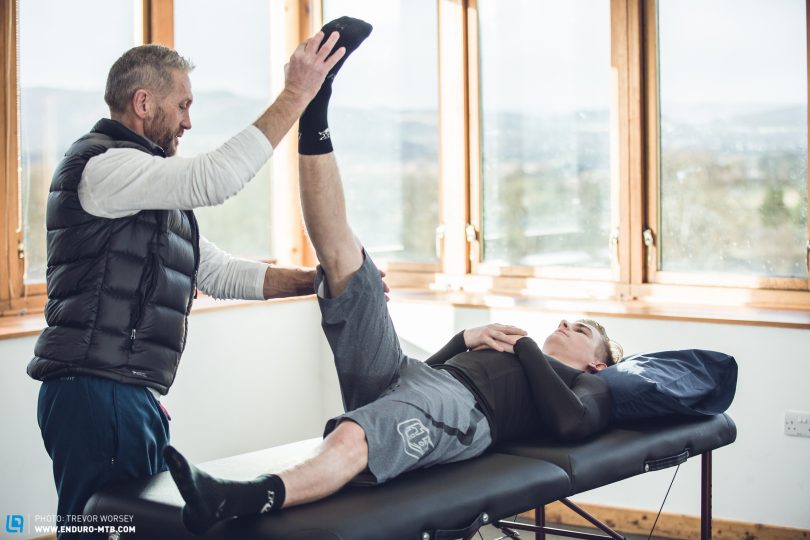
Review your bike position.
This is a no brainer. Making sure your bike fits you correctly is essential for both maximising performance and for injury avoidance. Source a good bike shop that is experienced with mountain bike fitting. Make sure you only make small adjustments at any one time and get used to these before making further changes.
Physiotherapy, myofascial release, and massage.
When things don’t go quite to plan and you’re unable to manage or shrug off back pain or other injuries, then an experienced Sports Physiotherapist can assess and diagnose the root of your pain or injury. They can apply hands-on treatment like myofacial release, mobilisation or deep massage which will help you to regain normal pain-free function. They will also teach you how to self-manage your back pain or provide exercise plans to help with general stiffness or niggles. Regular sports massage will also help to prevent back pain and improve recovery.
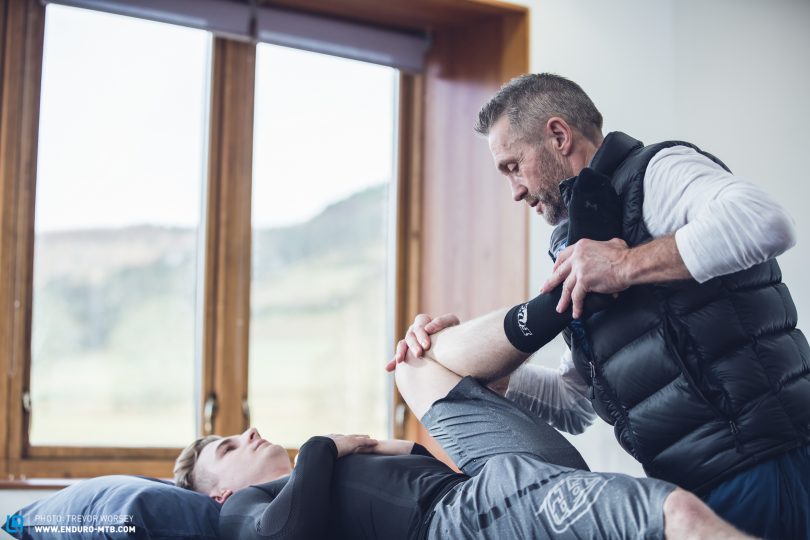
My final piece of advice is don’t accept back pain as the norm when mountain biking. Practically every rider we have seen with back pain at our clinics has recovered and is now free of pain. Some take longer to resolve and may be more complicated by a combination of causes, but none the less it’s resolvable. You just need the right advice and treatment and to be smart about the use of a backpack!
About Phil Mack

Phil has over 17 years of physiotherapy and sports science experience working with professional and international athletes and teams throughout the UK, Australia and South Africa, including the South African Springboks, Leicester Tigers and Ulster Rugby, as well as the South African Triathlon Team. Personally, he has represented both South Africa and Great Britain in Triathlon and Duathlon and is passionate about mountain biking and climbing. He can be contacted via his website, and Phil is only too happy to chat about any concerns that you may have.
Did you enjoy this article? If so, we would be stoked if you decide to support us with a monthly contribution. By becoming a supporter of ENDURO, you will help secure a sustainable future for high-quality mountain bike journalism. Click here to learn more.
Words: Phil Mack Photos: Catherine Smith and Trev Worsey



